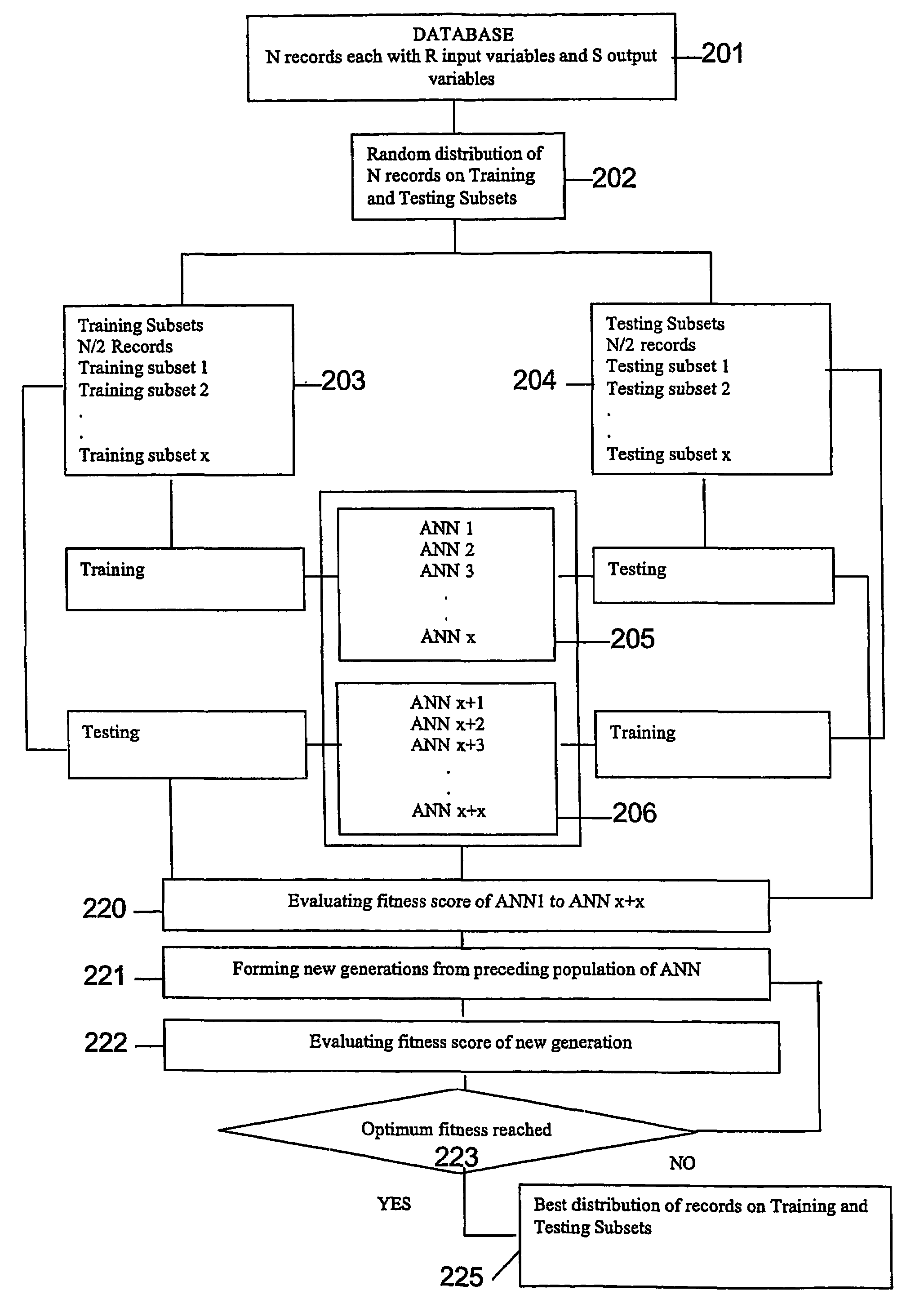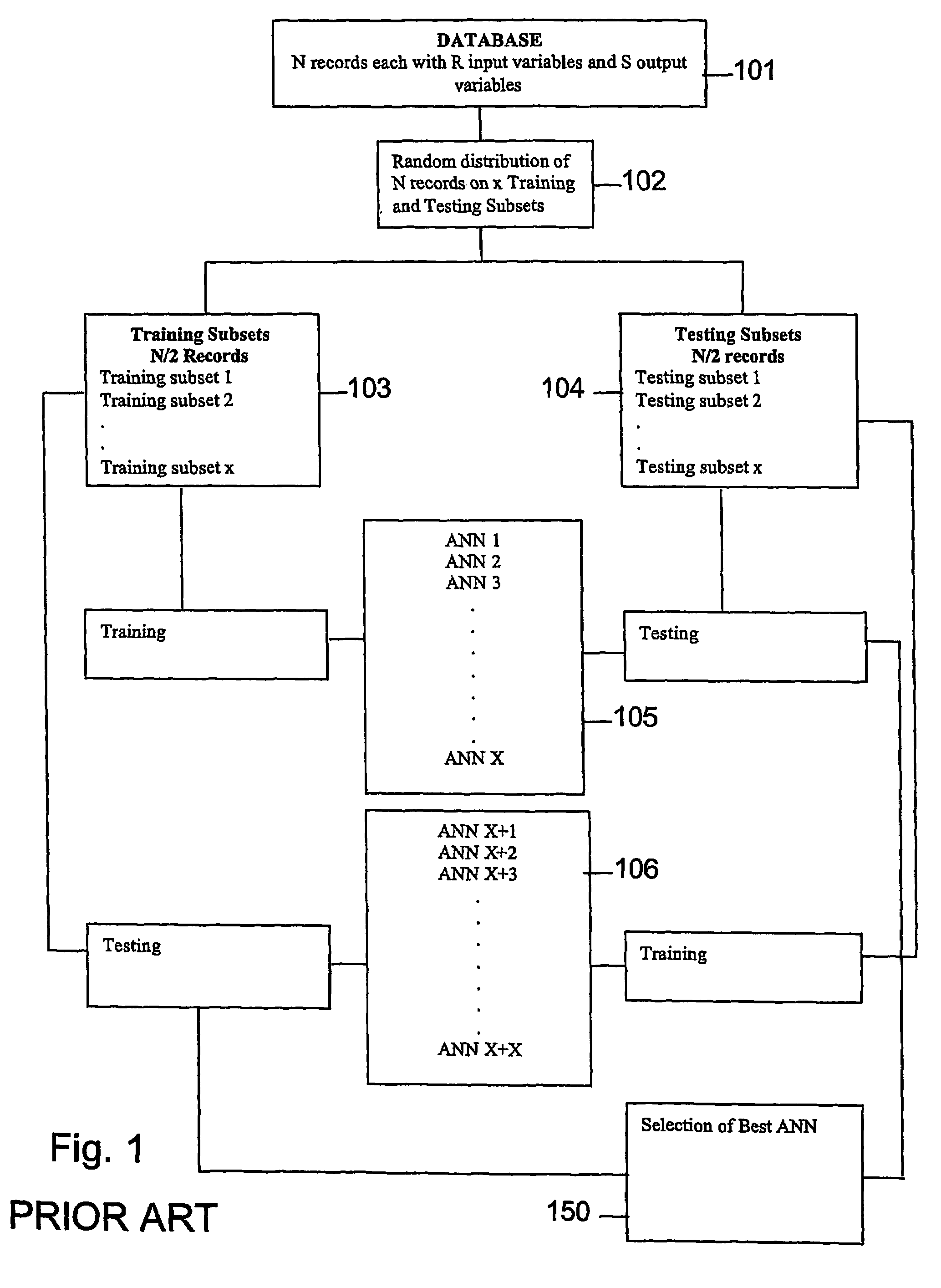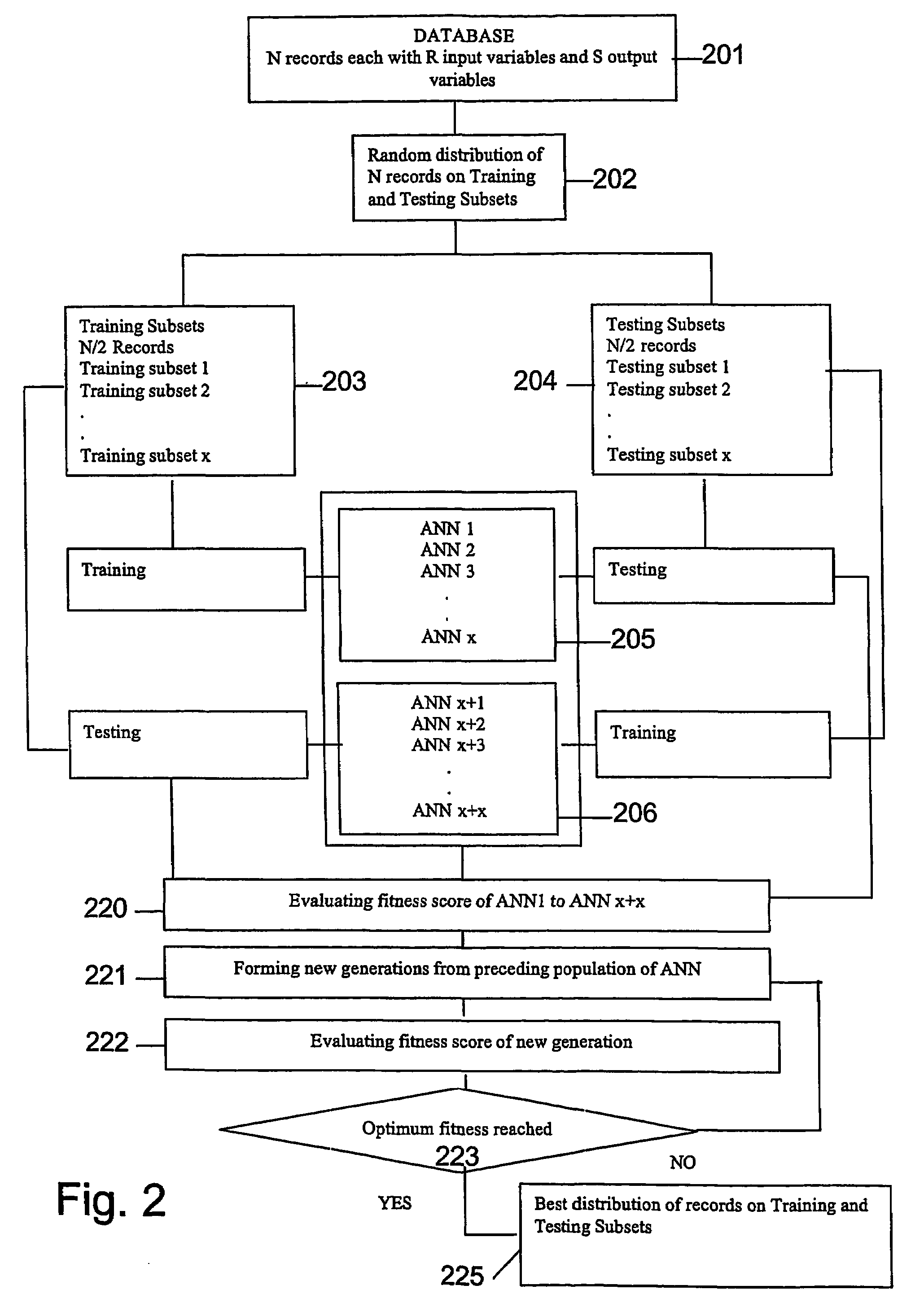System and method for optimization of a database for the training and testing of prediction algorithms
a prediction algorithm and database technology, applied in the field of artificial intelligence, can solve the problems of deterministic methods, easy local minima, and well-known gradient descent techniques, and achieve the effects of reducing the number of prediction algorithms, and reducing the accuracy of prediction algorithms
- Summary
- Abstract
- Description
- Claims
- Application Information
AI Technical Summary
Benefits of technology
Problems solved by technology
Method used
Image
Examples
example 1
[0121]This example deals with the optimization of a data set for Heart Disease patients. Data was collected experimentally and the complete set consists of 270 cases. The target is to predict the presence or the absence of heart disease on the basis of demographic and anamnestic variables and clinical examinations.
[0122]The 270 cases represent 150 patients with no heart disease and 120 patients with a diagnosed heart disease. Thirteen independent variables are considered for the classification:[0123]1. Age (real value)[0124]2. Sex (binary)[0125]3. Chest pain type (nominal)[0126]4. resting blood pressure (real value)[0127]5. Serum cholesterol [mg / dl] (real value)[0128]6. Pasting blood sugar>120 mg / dl (binary)[0129]7. resting electro-cardiographic results (nominal)[0130]8. Maximum heart rate achieved (real value)[0131]9. Exercise induced angina (binary)[0132]10. Oldpeak=ST depression indiced by exercise relative to rest (real value)[0133]11. The slope of the peak exercise ST segment (...
example 2
[0140]This example shows the relevance of the pre-processing of data for input variable selection. In this example, Discriminant Analysis and Neural networks where used with the following learning methods:[0141]1. Feed forward back propagation (BP)[0142]2. Auto-recurrent (ARCR) and Cluster-recurrent (TAMS) methods.
The study was based on 350 patients (86 males and 264 females aged between 20 and 81 years). 263 of the patients with a diagnosis of Atrophic Body Gastritis (ABG) and 87 with a diagnosis of non atrophic Body Gastritis. The data set is composed of 40 independent variables, maximized with the aim of obtaining binary answers (presence / absence), including demographic data, clinical history and biochemical parameters. Various methods were used to select the most significant variables for determining diagnostic accuracy.
[0143]The following Table C shows the experiments performed:
[0144]
TABLE CNr. ofExperimentvariablesmethod140Random samples23810 randomly selected samples of distr...
PUM
 Login to View More
Login to View More Abstract
Description
Claims
Application Information
 Login to View More
Login to View More - R&D
- Intellectual Property
- Life Sciences
- Materials
- Tech Scout
- Unparalleled Data Quality
- Higher Quality Content
- 60% Fewer Hallucinations
Browse by: Latest US Patents, China's latest patents, Technical Efficacy Thesaurus, Application Domain, Technology Topic, Popular Technical Reports.
© 2025 PatSnap. All rights reserved.Legal|Privacy policy|Modern Slavery Act Transparency Statement|Sitemap|About US| Contact US: help@patsnap.com



